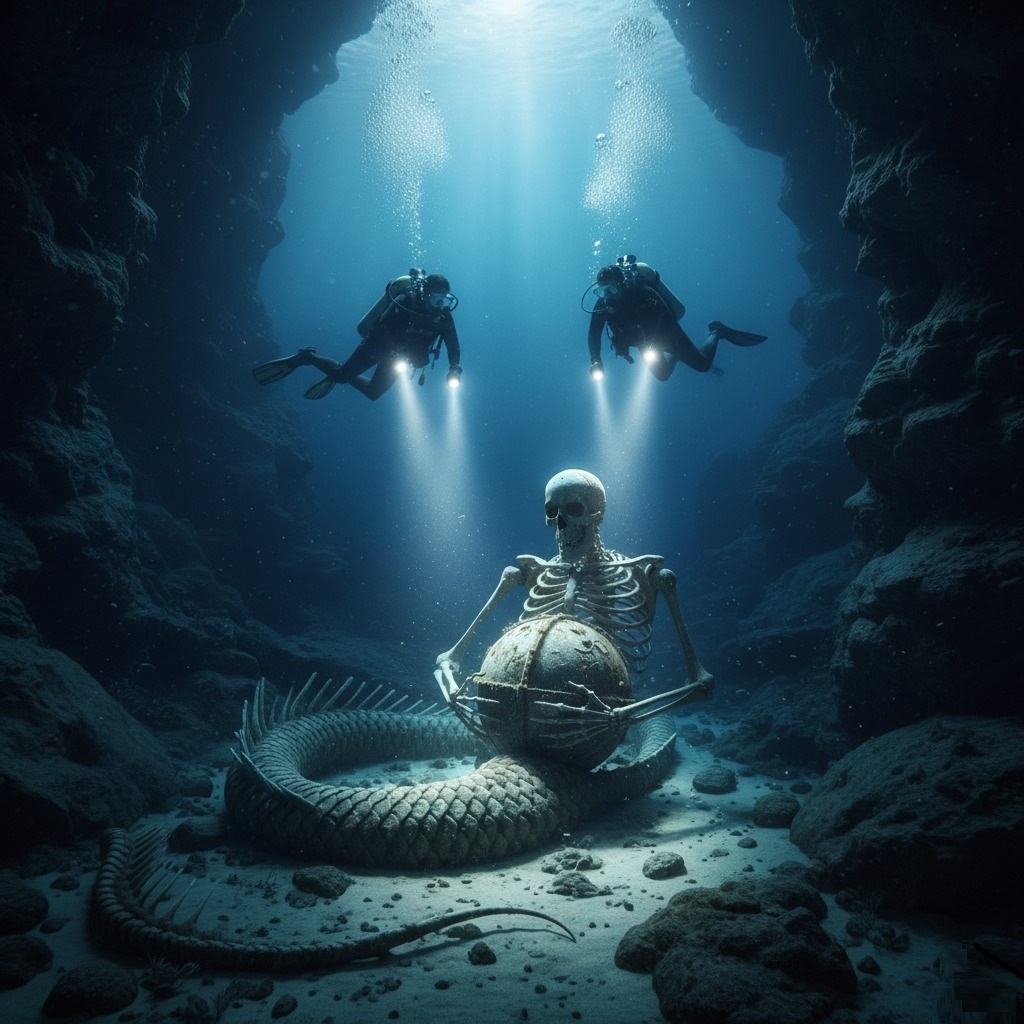The Siren’s Secret: Unearthing Ancient Mysteries in the Ionian Sea

The year was 2024. Dr. Aris Thorne, a marine archaeologist whose weathered face bore the marks of countless sun-drenched expeditions, adjusted his mask, the familiar scent of neoprene a comfort in the inky depths. Beside him, his protégé, the brilliant young oceanographer Dr. Lena Petrova, checked her gauges. Their submersible, the Triton’s Eye, had been painstakingly mapping a previously unexplored deep-sea trench off the coast of Zakynthos, in the heart of the Ionian Sea. Legends of sunken cities and forgotten civilizations clung to this part of the Mediterranean, whispered among local fishermen for generations. Today, however, they were hunting for something far more unusual.
Their sonar had detected an anomaly – a massive, structured echo deep within a colossal submarine cavern, far beneath the known limits of human habitation. As they navigated the Triton’s Eye through a narrow, almost impossibly jagged fissure, the cavern opened before them, a cathedral of darkness. Aris switched on the external lights, cutting through the abyssal gloom with powerful beams.
What they saw next sent a shiver down Aris’s spine, a sensation he hadn’t felt since unearthing the submerged temple of Poseidon near Cape Sounion years ago. There, resting on the sandy floor, bathed in the submersible’s harsh light, was a skeleton of colossal proportions. It was undeniably humanoid from the waist up, but below, a magnificent, undulating tail stretched for what must have been twenty meters, its intricate bone structure undeniably piscine. It was a mermaid – a siren – out of myth, made terrifyingly real.
Lena gasped, her voice crackling over the comms. “Aris, is that… is that even possible?”
“Possible or not, Lena, it’s right in front of us,” Aris murmured, his mind racing. This was beyond anything he’d ever imagined. The sheer scale, the impossible preservation in the frigid depths, the echoing tales of ancient Greek mariners driven mad by enchanting voices – it all converged in this single, impossible discovery.
But the skeleton held another secret. Cradled within its ribcage, almost as if clutched in death, was a perfectly spherical object. It was metallic, dark, and intricately engraved with symbols that Aris had never seen before, yet they possessed a haunting familiarity, echoing motifs found in pre-Mycenaean artifacts. Its surface glimmered faintly, almost pulsating with a faint, internal light.
“The orb,” Lena breathed, her eyes wide. “It’s… unlike anything I’ve ever encountered.”
Over the next few weeks, the world watched in stunned silence as news of the “Siren of Zakynthos” spread like wildfire. The initial dives were meticulously slow, every bone, every inscription, every grain of sand documented. The scientific community was alight with debate. Was it a hitherto unknown species of marine mammal? An elaborate hoax? Or had the ancient myths, so long dismissed as mere folklore, held a kernel of truth?
Aris and Lena, leading the international team, focused on the orb. Its composition defied known metallurgy, its power source inexplicable. As they began to decipher the faint engravings, a chilling narrative began to emerge – not of a goddess, but of a guardian. The symbols spoke of an ancient pact, of a deep-sea civilization tasked with safeguarding a cosmic secret, and of the immense power contained within the orb, capable of both creation and destruction.
The story was far from over. The Siren of Zakynthos was not merely an archaeological marvel; it was a portal to understanding a lost epoch, a forgotten history that might redefine humanity’s place in the universe. As Aris looked at the spectral figure, illuminated by their latest robotic probe, he knew one thing for certain: the Ionian Sea had many more secrets yet to yield, and they had only just begun to listen to its ancient song.
